Horizontal subsurface flow constructed wetlands as an alternative for heavy metal removal in gold mining effluents
Humedales construidos de flujo subsuperficial horizontal como alternativa para la remoción de metales pesados en efluentes de minería aurífera
Main Article Content
Currently, one of the most significant problems facing humanity is centered on environmental pollution, where the quality of water resources, air and soil are in constant detriment, substantially influencing public health and the well-being and way of life of individuals. Thus, artisanal gold mining causes various environmental problems, mainly to the water matrix, since the liquid waste from gold mining is discharged into the soil and bodies of water without any type of treatment. Accordingly, the objective of this research is to evaluate the efficiency of a horizontal subsurface flow constructed wetland in the removal of heavy metals present in mining effluents. The execution of the study consisted of three phases, integrated by a physicochemical characterization of the effluent, then, the design and construction of the constructed wetland at pilot scale, and finally, the operation and monitoring for the evaluation of the removal efficiency. We were able to detect traces of mercury and lead that do not comply with Colombian regulations for discharges (resolution 0631 of 2015). Likewise, a system of constructed wetlands was designed to evaluate the efficiency of two types of macrophytes for the environmental remediation of the effluent.
Downloads
Article Details
American Public Health Association, American Water Works Association, & Water Environment Federation. (2017). Standard Methods for the Examination of Water and Wastewater (R. Baird, A. Eaton, & E. Rice, Eds.; 23rd ed., Issue 9). American Public Health Association.
APHA (American Public Health Association). (1999). Standard methods for the examination of water and wastewater (23rd ed).
Beckers, F., & Rinklebe, J. (2017). Cycling of mercury in the environment: Sources, fate, and human health implications: A review. Critical Reviews in Environmental Science and Technology, 47(9), 693–794. https://doi.org/10.1080/10643389.2017.1326277 DOI: https://doi.org/10.1080/10643389.2017.1326277
Chen, J., Deng, S., Jia, W., Li, X., & Chang, J. (2021). Removal of multiple heavy metals from mining-impacted water by biochar-filled constructed wetlands: Adsorption and biotic removal routes. Bioresource Technology, 331(March), 125061. https://doi.org/10.1016/j.biortech.2021.125061 DOI: https://doi.org/10.1016/j.biortech.2021.125061
Delgado, N., Bermeo, L., Hoyos, D. A., Peñuela, G. A., Capparelli, A., Marino, D., Navarro, A., & Casas-Zapata, J. C. (2020). Occurrence and removal of pharmaceutical and personal care products using subsurface horizontal flow constructed wetlands. Water Research, 187, 1–11. https://doi.org/10.1016/j.watres.2020.116448 DOI: https://doi.org/10.1016/j.watres.2020.116448
Gallo, J., Vargas, L., Velasco, M., Gutiérrez, L., & Pérez, E. (2021). Use of the gray water footprint as an indicator of contamination caused by artisanal mining in Colombia. Resources Policy, 73, 1–12. https://doi.org/10.1016/j.resourpol.2021.102197 DOI: https://doi.org/10.1016/j.resourpol.2021.102197
Habashi, F. (2016). Gold - An Historical Introduction. In Gold Ore Processing (2nd ed., pp. 2–20). Elsevier. DOI: https://doi.org/10.1016/B978-0-444-63658-4.00001-3
IDEAM. (2007). Instructivo para la toma de muestras de aguas residuales. http://www.ideam.gov.co/documents/14691/38158/Toma_Muestras_AguasResiduales.pdf/f5baddf0-7d86-4598-bebd-0e123479d428
Ley 1658 de 2013. Por medio de la cual se establecen disposiciones para la comercialización y el uso de mercurio en las diferentes actividades industriales del país, se fijan requisitos e incentivos para su reducción y eliminación y se dictan otras disposiciones. 15 de julio de 2013. Diario Oficial 48852. https://www.funcionpublica.gov.co/eva/gestornormativo/norma.php?i=53781
Mozzaffari, M., Shafiepour, E., Ahmad, S., Rakhshandehroo, G., Wallace, S., & Stefanakis, A. (2021). Hydraulic characterization and removal of metals and nutrients in an aerated horizontal subsurface flow “racetrack” wetland treating primary-treated oil industry effluent. Bioresource Technology, 200(March), 125061. https://doi.org/10.1016/j.biortech.2021.125061 DOI: https://doi.org/10.1016/j.watres.2021.117220
Novoa Villa, H. H., Arizaca Avalos, A., Huisa Mamani, F., Novoa Villa, H. H., Arizaca Avalos, A., & Huisa Mamani, F. (2022). Efectos en los ecosistemas por presencia de metales pesados en la actividad minera de pequeña escala en Puno. Revista de Investigaciones Altoandinas, 24(3), 182–189. https://doi.org/10.18271/RIA.2022.361 DOI: https://doi.org/10.18271/ria.2022.361
Ramírez, D. F. (2021). Sistema de medición y control de temperatura para un prototipo de planta de tratamiento de aguas residuales. Investigación e Innovación En Ingenierías, 9(1), 100–113. https://doi.org/10.17081/invinno.9.1.4305 DOI: https://doi.org/10.17081/invinno.9.1.4305
Resolución 0631 de 2015 [Ministerio de Ambiente y Desarrollo Sostenible]. Por la cual se establecen los parámetros y los valores límites máximos permisibles en los vertimientos puntuales a cuerpos de aguas superficiales y a los sistemas de alcantarillado público y se dictan otras disposiciones. 17 de marzo de 2015. https://www.minambiente.gov.co/wp-content/uploads/2021/11/resolucion-631-de-2015.pdf
Salazar-Camacho, C., Salas-Moreno, M., Marrugo-Madrid, S., Paternina-Uribe, R., Marrugo-Negrete, J., & Díez, S. (2022). A human health risk assessment of methylmercury, arsenic and metals in a tropical river basin impacted by gold mining in the Colombian Pacific region. Environmental Research, 212, 1–15. https://doi.org/10.1016/j.envres.2022.113120 DOI: https://doi.org/10.1016/j.envres.2022.113120
Samuel, W., Richard, B., & Nyantakyi, J. A. (2022). Phytoremediation of heavy metals contaminated water and soils from artisanal mining enclave using Heliconia psittacorum. Modeling Earth Systems and Environment, 8(1), 591–600. https://doi.org/10.1007/s40808-020-01076-2 DOI: https://doi.org/10.1007/s40808-020-01076-2
Sharma, R., & Malaviya, P. (2022). Constructed wetlands for textile wastewater remediation: A review on concept, pollutant removal mechanisms, and integrated technologies for efficiency enhancement. Chemosphere, 290, 133358. https://doi.org/10.1016/J.CHEMOSPHERE.2021.133358 DOI: https://doi.org/10.1016/j.chemosphere.2021.133358
Singh, S., & Chakraborty, S. (2020). Performance of organic substrate amended constructed wetland treating acid mine drainage (AMD) of North-Eastern India. Journal of Hazardous Materials, 397(February), 122719. https://doi.org/10.1016/j.jhazmat.2020.122719 DOI: https://doi.org/10.1016/j.jhazmat.2020.122719
Torres, J. D., Magno, J. S., Pineda Aguirre, R. R., & Cruz, M. A. (2018). Evaluación de la eficiencia en el tratamiento de aguas residuales para riego mediante humedales Artificiales de flujo libre superficial (FLS) con las especies Cyperus Papyrus y Phragmites Australis, en Carapongo-Lurigancho. Revista de Investigación Ciencia, Tecnología y Desarrollo, 3(2). https://doi.org/10.17162/rictd.v3i2.657 DOI: https://doi.org/10.17162/rictd.v1i2.954



 Perfil Google Scholar
Perfil Google Scholar







